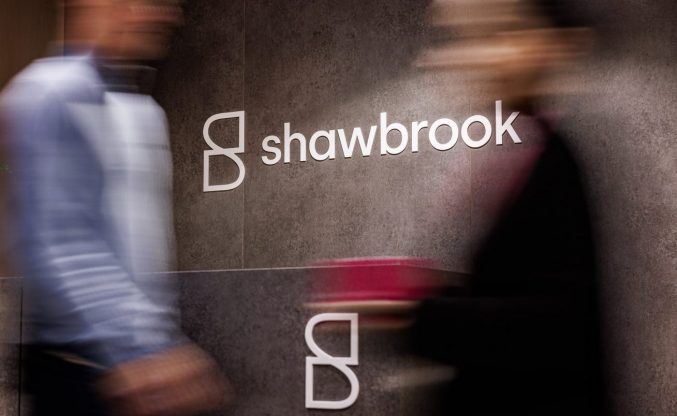Annual bridging finance trends revealed
By Bridging Loan Directory
Bridging loan volume rose 10.7% to £534.1m in 2017, compared to £482.61m in 2016 as demand for short term finance in the UK grew, according to the latest Bridging Trends data.
The increase in 2017 volume continues a trend seen in 2016, when activity rose 11.5% on 2015 levels of £432.51m.
The bridging loan market withstood volatility from major political and economic events throughout 2017, which included a snap general election, an increase in inflation and continued uncertainty over Brexit negotiations.
The year kicked off to a strong start, with £118.79m of bridging loans completed by Bridging Trends contributors in the first quarter, before soaring to £150.7m in the second quarter — the highest level of loans transacted by contributors in a single quarter since Bridging Trends launched in 2015.
Volume cooled slightly in the second half of the year, dropping to £142.75m in Q3 and to £122.49m in Q4.
Bridging trends is a quarterly publication that collects data from bridging lender mtf and a number of the UK’s leading specialist finance brokers: Brightstar Financial, Enness, Positive Lending and SPF Short Term Finance (SPF), to offer a general snapshot of the UK bridging finance industry as a whole.
The split between 1st and 2nd charge loans remained consistent throughout 2017, with 2nd charge lending rising in every quarter. Second charges accounted for an average of 17% of total market volume in 2017 — up from 16% in 2016.
While a significant portion of bridging loan activity was unregulated in 2017, at an average of 54% of all transactions, regulated bridging loans increased market share on previous years to an average of 46% in 2017, compared to 44% in 2016 and 36.6% in 2015.
Regulated bridging loan activity outperformed unregulated bridging loans for the first time in the first quarter of 2017.
Average loan-to-value levels dropped to 46.6% in 2017, down from 49% in 2016 -highlighting that responsible lending levels continue.
Average monthly interest rates remained consistent throughout the year at 0.83%, dropping slightly from 0.85% in 2016 and 0.91% in 2015, demonstrating how bridging finance has become even more competitive.
Mortgage delays were again the most popular reason for clients taking out a bridging loan in 2017- at 29% of all lending, although this was a reduction from 2016 when they accounted for 34% of activity.
Demand for bridging loans taken out for refurbishments and auction purchases on the other hand increased in 2017.
Average loan terms remained consistent in 2017 at 12 months- up from 11 months in 2016. Average completion times averaged 43 days in 2017, down from 45 days in 2016.
Key data points from Bridging Trends 2017 are as follows:
- £51.5m increase in volume reported by contributors in 2017
- Lending peaked to its highest level in Q2 to £150.7m
- Regulated loans overtook non-regulated loans for the first time in Q1
- 2nd charge loans increased every quarter
- For the first time, refurbishments were the most popular reason for obtaining bridging finance in Q2
To view the Bridging Trends 2017 infographic, please visit www.bridgingtrends.com
Joshua Elash, pictured, director of bridging finance lender, mtf, comments:
“The continued growth in lending volume in this sector, as reflected by the data reported by the contributing parties over the year, evidences the extent to which bridging finance is now increasingly a mainstream financial solution.
“It is interesting to note the what appears to be a direct correlation between the data reported and the macro-economic and regulatory changes which have impacted upon the market. We have, for example, in this annual reporting cycle, seen regulated bridging finance lending outstrip unregulated bridging finance for the first time. This follows on from the implementation of the mortgage credit directive and the consequential introduction of a new class of regulated “consumer” buy to let lending.
“Equally we are interested to note that again for the first time since reporting began, refurbishment to existing investment property was the most popular reason for borrowing during Q2 of last year. This follows on from increases in the stamp duty taxes payable on the acquisition of new buy-to-let properties and indicates a potential strategy shift amongst professional property investors towards value enhancement.
“As we look ahead to the year 2018 we are interested to see how these two trends in particular pan out. In the interim and what remains certain is that bridging finance as a financial solution continues to go from strength to strength.”
Chris Whitney, Senior Broker at Enness Commercial, comments:
“Between stamp duty costs and stagnation in the London property market, it’s no wonder bridging finance for refurbishment is becoming increasingly popular. To avoid heft stamp duty charges, many more clients have been buying cheaper or outdated properties, and using second charge bridging finance to update them before refinancing onto a residential product. Likewise, we’ve seen numerous client looks to raise money against their properties who do not want to refinance altogether. As such, they’re using regulated bridges as second charges against their property, in order to keep their attractive first charge mortgage whilst securing the extra funds they need.
“Encouraging to see an overall increase in the total amount of bridging originated by the contributors to Bridging Trends, indicating a strong and resilient bridging sector that can survive what was a tough year with numerous obstacles to overcome, including MCD, PRA and tax changes for BTL / second properties and not least the long-drawn out Brexit negotiations.”
Kit Thompson, Director of Short Term Lending & Development at Brightstar, comments:
“Our business has seen a large increase in bridging for property refurbishment, with an increase in PDR schemes and change of use projects. In fact, with the exception of our FCA regulated bridging, which by contrast doesn’t generally involve refurbishment, almost all of our non-regulated bridging loans here at Brightstar involved some element of refurbishment, whether just light refurbs or those projects involving change of use and planning consent.”











You must be logged in to post a comment.